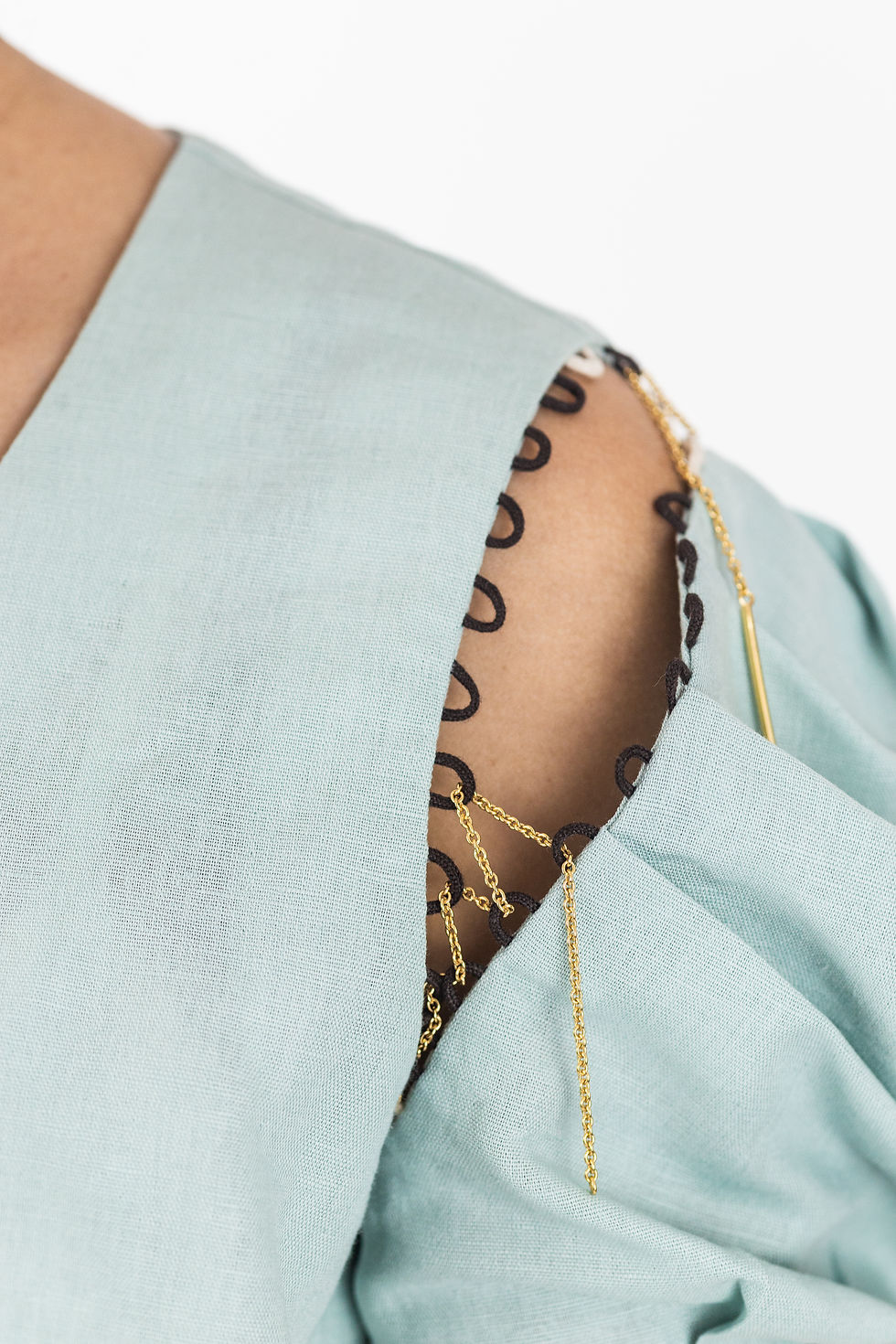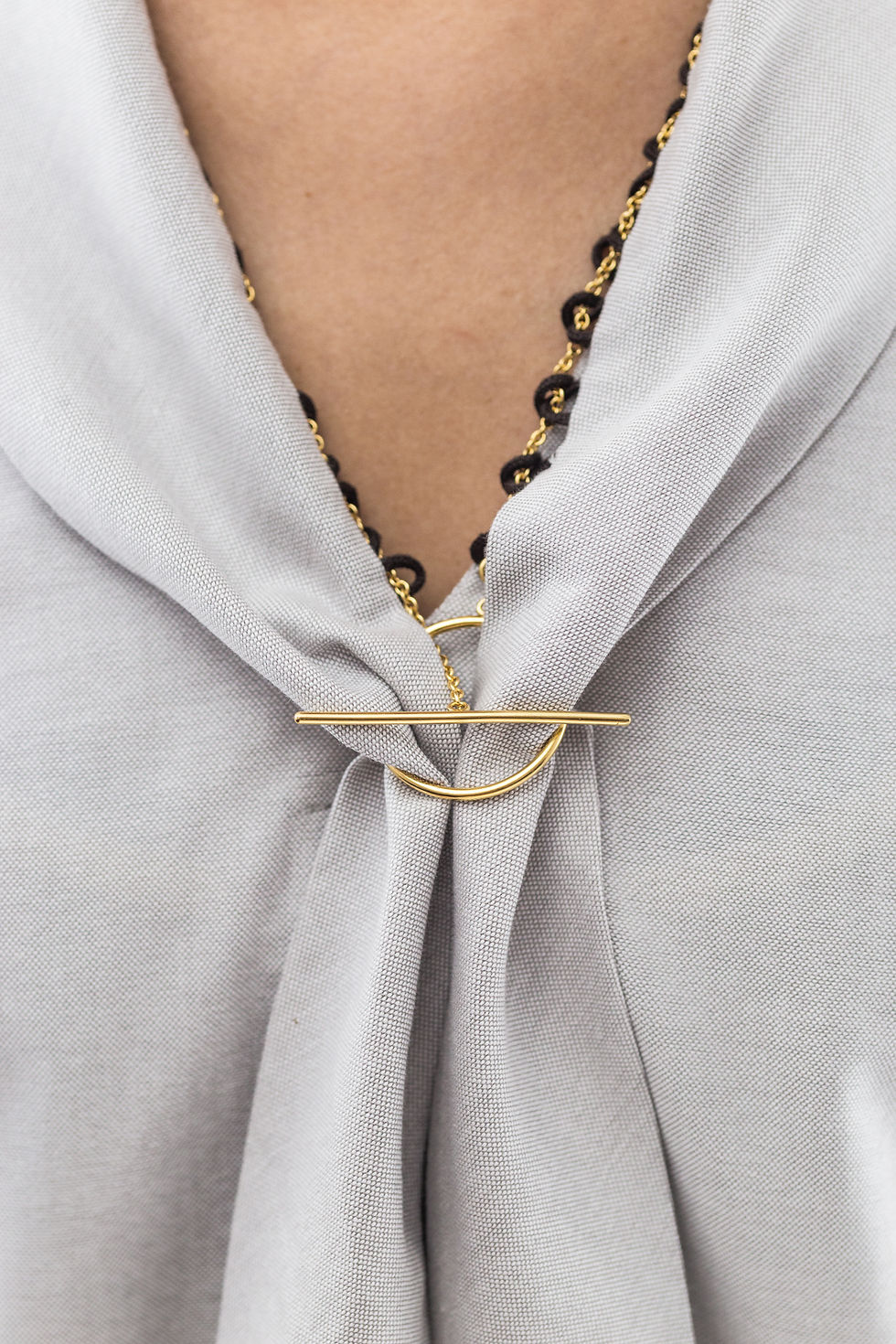Patrícia Barbosa
O OURO E O ALGODÃO ( master's thesis project)
“O ouro e o algodão” (gold and cotton) reflects the contrast and proximity between two materials. If, on the one hand, “gold” is synonymous with jewellery, detail, value, symbolism and essentially non pragmatic, “cotton” is synonymous with pragmatism, with the material that covers, protects and less noble.
Starting from this assumption, the project “O ouro e o algodão” explores the relationship between jewellery and clothing, through the study of both, as elements that complement and complete each other in the body. The aim is essentially to explore the meaning and the project potential of the jewel as a utilitarian and symbolic tool in combination with the clothing that is designed to work together with the jewel.
In a range of objects, this relationship is presented in two moments, and in both, the jewel acts on clothing as an element/device of transformation and conformation, adding detail and value to it, and clothing, in turn, is designed, in most cases, to give it support so that its presence makes sense.
FIRST MOMENT: support jewellery
The group of objects that aims to solve small inconveniences of everyday life, assuming them visually. A series of situations were a reference so that the jewel could intervene in clothing as a resource and, in this first moment, the jewel exists separately from the garment, however, it only corresponds to its function applied only to it, lacking it to make sense. The agility of use (existing in clothing items such as buttons and zippers) is intended at this time, by adapting the jewel to the clothing.
















click on the images to know more about each project


















SECOND MOMENT: jewellery integrated in clothing
This second moment arises from the desire to promote a greater involvement of the wearer with clothing through jewellery, but above all to develop more dynamic, adjustable and mutant garments. Using the idea of the Lycra stockings of the 1940s (when women could no longer wear them due to the scarcity of raw material, they drew on their legs a risk in their length, emitting the seam of the stockings), it was possible to discover how to achieve the intended. This reference translates into the investment of time in the configuration of the garment, with which the wearer acquires a greater perception of details, thus becoming involved in the process.
The projects were based on small observations in the world of dressmaking, in which the model is not finished and, consequently, there is space to configure and adjust it to the body. Without the dressmaker, the user is the one who configures and finishes it. Within the limitations, acquires a garment with different formats, allowed by the jewel that is incorporated in it. Like Hussein Chalayan's fashion show of the Autumn/Winter 2000 collection, a certain theatricality originates when it comes to dressing.
Since jewellery and fabric exist in very different proportions in clothing, were chosen simple models with monochrome fabrics with the aim of creating harmony between materials, not underestimating the jewellery. Since the garments were designed to incorporate the jewellery, the absence of one of the elements makes them incomplete.
For the development of the projects it was opted for a color palette that was aesthetically coherent allowing a harmony in the whole. Taking into consideration this selection, and the matt texture of the fabrics, it was decided to give a polished finish to the jewels, as well as yellow and rose gold plated, in order to obtain a contrast and a coherent set of colors.

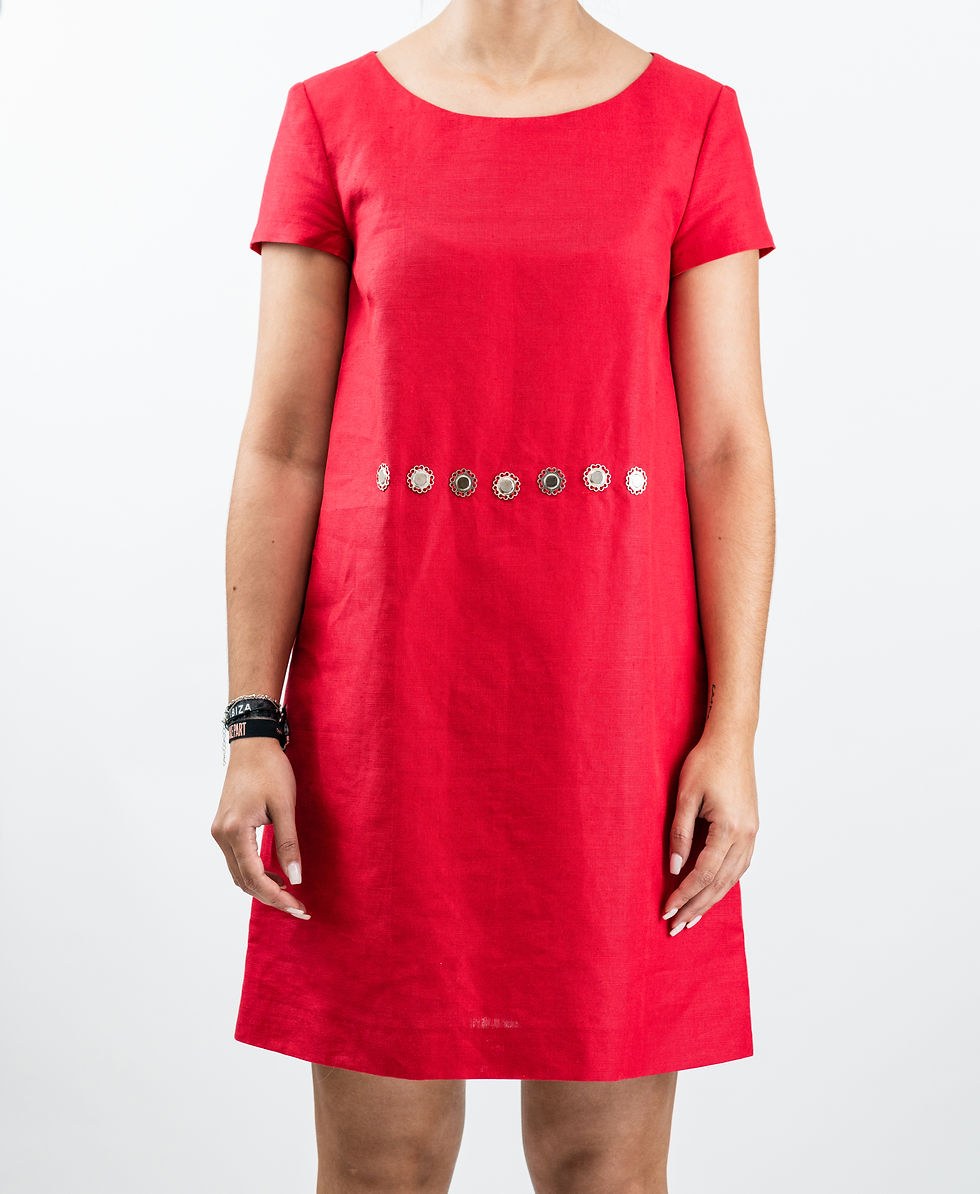
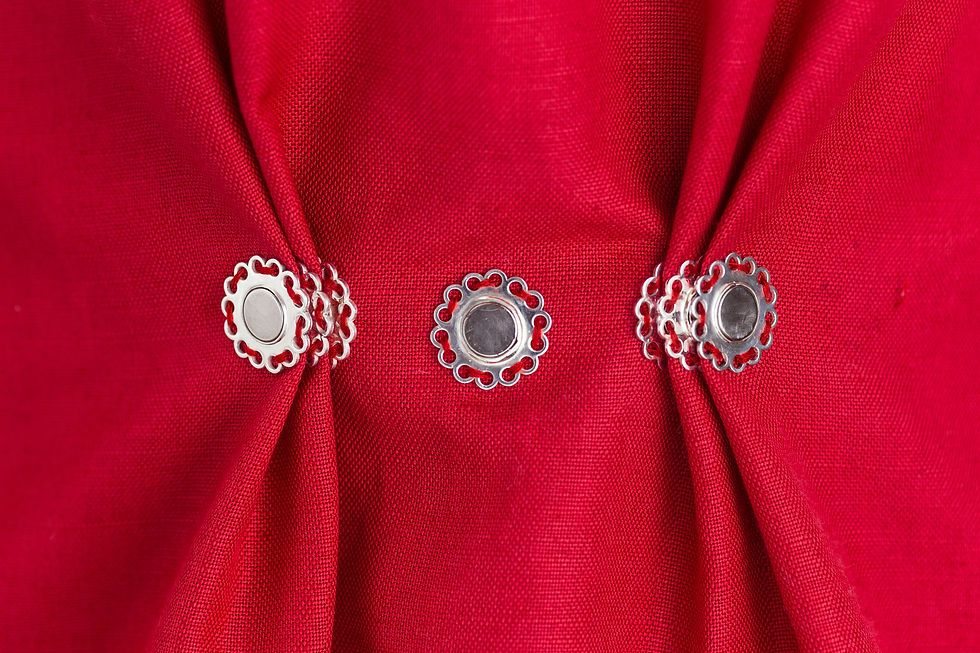










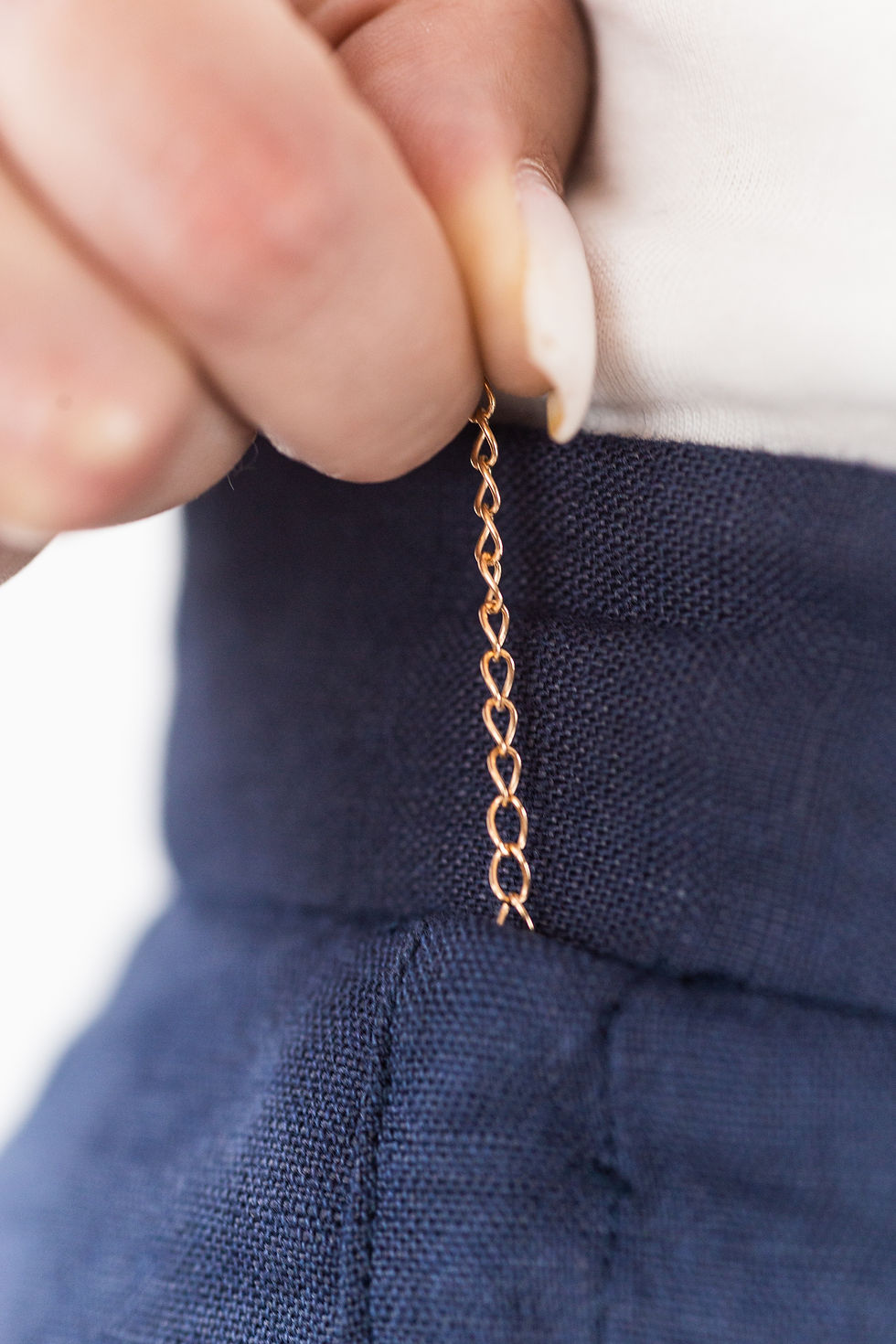
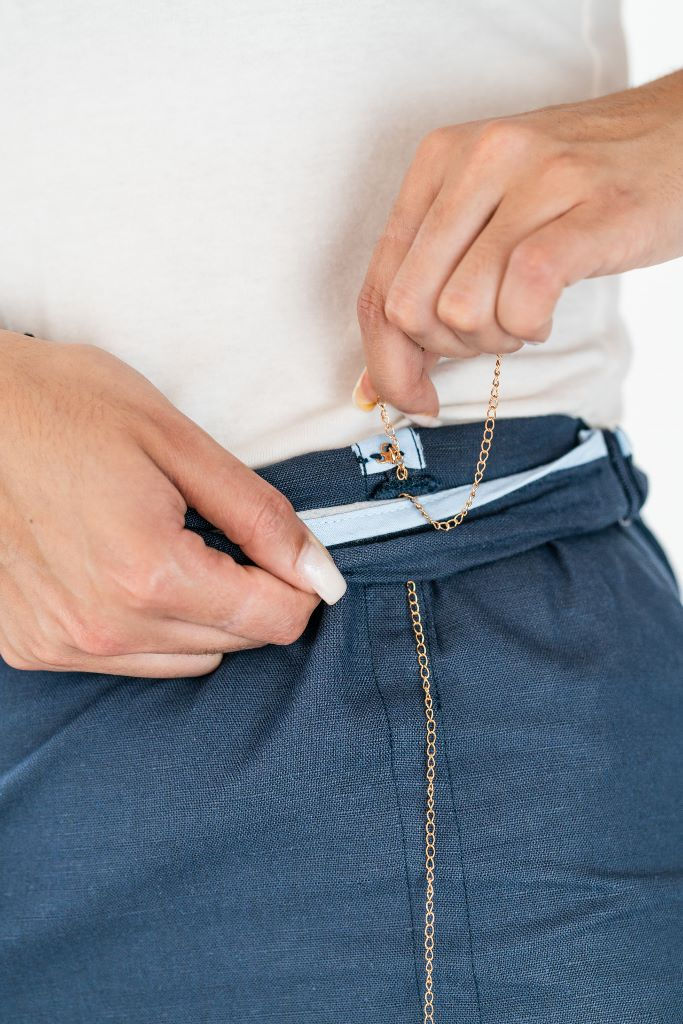










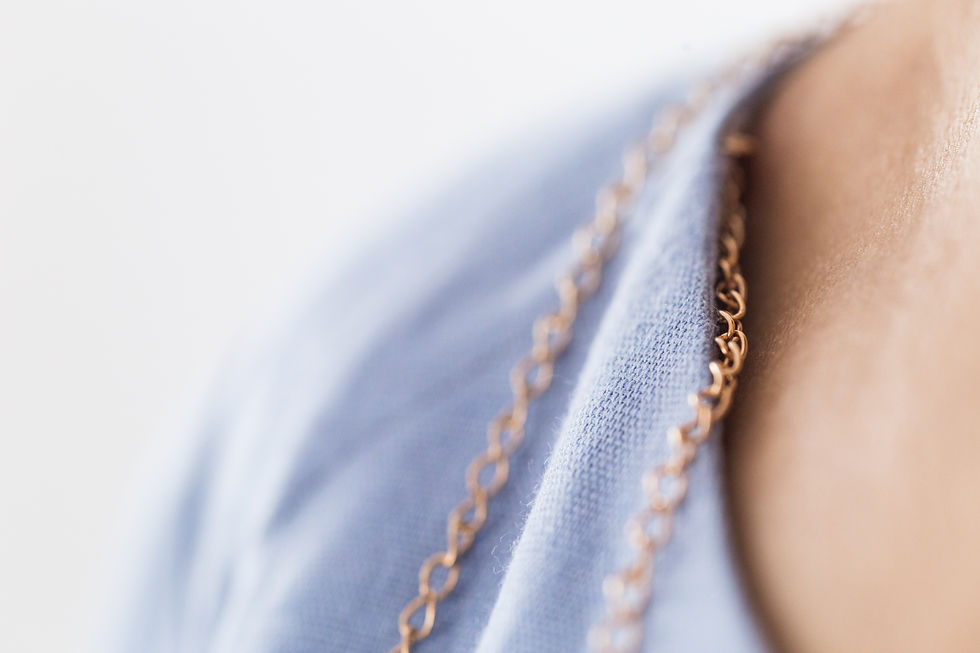




















click on the images to know more about each project










